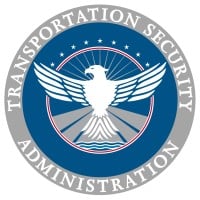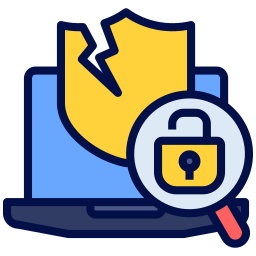
Department of Education Company Cyber Security Posture
education.vic.gov.auThe Department of Education is responsible for delivering the Victorian Government’s commitment to making Victoria the Education State, where all Victorians have the best learning and development experience, regardless of their background, postcode or circumstances. Education remains a cornerstone for ensuring all Victorians have the skills and knowledge they need to actively participate in and contribute to our rapidly-changing economy and society. The Department delivers and regulates statewide learning and development services across the early childhood and school sectors. Previously the Department of Education and Training.
DE Company Details
detvic
17894 employees
83588
922
Government Administration
education.vic.gov.au
Scan still pending
DEP_2254708
In-progress
Between 900 and 1000
This score is AI-generated and less favored by cyber insurers, who prefer the TPRM score.
 DE Global Score
DE Global Score.png)

Department of Education Company Scoring based on AI Models
| Model Name | Date | Description | Current Score Difference | Score |
|---|---|---|---|---|
| AVERAGE-Industry | 03-12-2025 | This score represents the average cybersecurity rating of companies already scanned within the same industry. It provides a benchmark to compare an individual company's security posture against its industry peers. | N/A | Between 900 and 1000 |
Department of Education Company Cyber Security News & History
| Entity | Type | Severity | Impact | Seen | Url ID | Details | View |
|---|---|---|---|---|---|---|---|
| Department of Education & Training, Victoria | Breach | 100 | 04/2017 | DEP115528822 | Link | ||
Rankiteo Explanation : Attack threatening the organization's existenceDescription: The Victorian Education Department experienced a data breach after accidentally posting private and sensitive information on children who were homeschooled on their website. The contact information of certain parents as well as information identifying pupils who experienced medical issues and personal traumas like bullying at school were made public. The Department investigated the incident and took immediate action to take the submissions down. | |||||||
Department of Education Company Subsidiaries

The Department of Education is responsible for delivering the Victorian Government’s commitment to making Victoria the Education State, where all Victorians have the best learning and development experience, regardless of their background, postcode or circumstances. Education remains a cornerstone for ensuring all Victorians have the skills and knowledge they need to actively participate in and contribute to our rapidly-changing economy and society. The Department delivers and regulates statewide learning and development services across the early childhood and school sectors. Previously the Department of Education and Training.
Access Data Using Our API

Get company history
.png)
DE Cyber Security News
Industry groups ‘alarmed’ Education Department cuts may weaken school cybersecurity
Federal cuts to information-sharing groups may damage nation's security posture, warn officials. Current and former government officials said ...
NYC’s Education Department and Public Library Pull Out of FCC’s Cybersecurity Initiative
WASHINGTON, July 2, 2025 – The New York City Department of Education and the New York Public Library system have pulled out of the Federal ...
Cybersecurity for School Administrators
CISA and other federal government agencies are committed to providing training, resources, and tools to help school leadership protect, ...
School’s out for cyber
The report examined recently leaked internal chat logs from the ransomware gang Black Basta. The leaked logs exposed “critical operational ...
Indiana lawmakers want to mandate uniform cybersecurity policies for schools, state agencies
Indiana school officials say they are facing increased cybersecurity threats. A bill moving through the House would address mounting ...
Will Higher Education Institutions Face Enhanced Cybersecurity Requirements?
U.S. colleges and universities watched closely this summer when the DOJ, in a novel move, scrutinized the cybersecurity compliance of a ...
Trump cuts could expose student data to cyber threats
Cybersecurity advocates warn that the Trump administration's budget and personnel cuts, along with rule changes, are stripping away key defenses that schools ...
4 Things to Know About School Cybersecurity and Trump Funding Cuts
Schools stand to lose significant cybersecurity support as the Trump administration and DOGE slash and rearrange the federal government.
School Safety and Security
A collection of information on cyber safety and cybersecurity, including resources on addressing cybersecurity in school Emergency Operation Plans. See the ...

DE Similar Companies

National Park Service
Most people know that the National Park Service cares for national parks, a network of over 420 natural, cultural and recreational sites across the nation. The treasures in this system – the first of its kind in the world – have been set aside by the American people to preserve, protect, and share t

State of Minnesota
Minnesota State Government is the third largest employer in the state of Minnesota, employing over 50,000 diverse and talented employees in more than 100 state agencies, boards, commissions, colleges, and universities. Our workplaces can be found across the state in 86 out of 87 Minnesota counties a

Landeshauptstadt Hannover
Die Stadt Hannover entstand irgendwann im Mittelalter als kleine dörfliche Siedlung auf einer hochgelegenen und damit hochwasserfreien Terrasse der Leine (Honovere= das hohe Ufer). Nach dem 2. Weltkrieg erholte sich die Stadt schneller als man dachte. Auf den Trümmern wurde eine moderne Stadt er

City of Philadelphia
With a workforce of 30,000 people, and opportunities in 1,000 different job categories, the City of Philadelphia is one of the largest employers in Southeastern Pennsylvania. As an employer, we operate through the guiding principles of service, integrity, respect, accountability, collaboration, dive

Transportation Security Administration (TSA)
The Transportation Security Administration (TSA) is a component agency of the U.S. Department of Homeland Security (DHS), committed to securing the nation’s transportation systems to ensure safe and efficient travel for all. Our mission is to protect the American people by preventing threats and dis

HM Revenue & Customs
HM Revenue and Customs (HMRC) is the UK’s tax, payments and customs authority. We collect the money that pays for the UK’s public services and help families and individuals with targeted financial support. We help the honest majority to get their taxes and payments right, and make it hard for the d

Frequently Asked Questions
Explore insights on cybersecurity incidents, risk posture, and Rankiteo's assessments.
DE CyberSecurity History Information
How many cyber incidents has DE faced?
Total Incidents: According to Rankiteo, DE has faced 1 incident in the past.
What types of cybersecurity incidents have occurred at DE?
Incident Types: The types of cybersecurity incidents that have occurred incident Breach.
How does DE detect and respond to cybersecurity incidents?
Detection and Response: The company detects and responds to cybersecurity incidents through containment measures with Taking down the submissions.
Incident Details
Can you provide details on each incident?

Incident : Data Breach
Title: Data Breach at Victorian Education Department
Description: The Victorian Education Department experienced a data breach after accidentally posting private and sensitive information on children who were homeschooled on their website. The contact information of certain parents as well as information identifying pupils who experienced medical issues and personal traumas like bullying at school were made public. The Department investigated the incident and took immediate action to take the submissions down.
Type: Data Breach
Attack Vector: Accidental Data Exposure
What are the most common types of attacks the company has faced?
Common Attack Types: The most common types of attacks the company has faced is Breach.
Impact of the Incidents
What was the impact of each incident?

Incident : Data Breach DEP115528822
Data Compromised: Contact information of parents, Information identifying pupils with medical issues and personal traumas
What types of data are most commonly compromised in incidents?
Commonly Compromised Data Types: The types of data most commonly compromised in incidents are Personal Information and Medical Information.
Which entities were affected by each incident?

Incident : Data Breach DEP115528822
Entity Type: Government Department
Industry: Education
Location: Victoria, Australia
Response to the Incidents
What measures were taken in response to each incident?

Incident : Data Breach DEP115528822
Containment Measures: Taking down the submissions
Data Breach Information
What type of data was compromised in each breach?

Incident : Data Breach DEP115528822
Type of Data Compromised: Personal Information, Medical Information
Sensitivity of Data: High
Personally Identifiable Information: Yes
How does the company handle incidents involving personally identifiable information (PII)?
Handling of PII Incidents: The company handles incidents involving personally identifiable information (PII) through was Taking down the submissions.
Investigation Status
What is the current status of the investigation for each incident?

Incident : Data Breach DEP115528822
Investigation Status: Investigated
Post-Incident Analysis
What were the root causes and corrective actions taken for each incident?

Incident : Data Breach DEP115528822
Root Causes: Accidental Publication
Additional Questions
Impact of the Incidents
What was the most significant data compromised in an incident?
Most Significant Data Compromised: The most significant data compromised in an incident were Contact information of parents and Information identifying pupils with medical issues and personal traumas.
Response to the Incidents
What containment measures were taken in the most recent incident?
Containment Measures in Most Recent Incident: The containment measures taken in the most recent incident was Taking down the submissions.
Data Breach Information
What was the most sensitive data compromised in a breach?
Most Sensitive Data Compromised: The most sensitive data compromised in a breach were Contact information of parents and Information identifying pupils with medical issues and personal traumas.
Investigation Status
What is the current status of the most recent investigation?
Current Status of Most Recent Investigation: The current status of the most recent investigation is Investigated.
What Do We Measure?
















Every week, Rankiteo analyzes billions of signals to give organizations a sharper, faster view of emerging risks. With deeper, more actionable intelligence at their fingertips, security teams can outpace threat actors, respond instantly to Zero-Day attacks, and dramatically shrink their risk exposure window.
These are some of the factors we use to calculate the overall score:
Identify exposed access points, detect misconfigured SSL certificates, and uncover vulnerabilities across the network infrastructure.
Gain visibility into the software components used within an organization to detect vulnerabilities, manage risk, and ensure supply chain security.
Monitor and manage all IT assets and their configurations to ensure accurate, real-time visibility across the company's technology environment.
Leverage real-time insights on active threats, malware campaigns, and emerging vulnerabilities to proactively defend against evolving cyberattacks.




